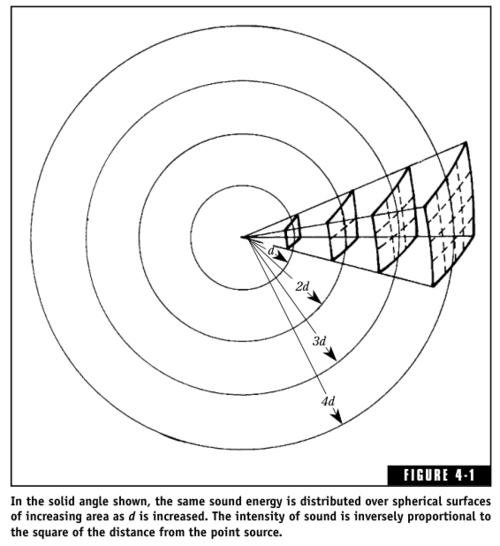MAN Wiki
Sound field (changes)
Showing changes from revision #0 to #1:
Added | Removed | Changed
Free sound field
In a free field, there are no reflections, and sound can travel in straight lines, which means any sound in the field is entirely determined by listeners or microphones. Free field conditions exist in large open outdoor spaces or in rooms having highly absorptive surfaces [1].
Unimpeded sound is sound that is unreflected, unabsorbed, undiffracted, unrefracted, undiffused, and not subjected to resonance effects [2].
Free-field sound divergence

In a ideal free field, when the SPL at distance from a point source is known, the difference of and the SPL at another distance is:
This result can be viewed as an instance of the inverse-distance law (for sound pressure), which derives from the famous inverse-square law (for sound intensity). With advanced calculation, the SPL is reduced 6.02 dB for each doubling of the distance [2].
The calculation result followed by the inverse square law may be presented as an reference to help researchers to develop rough estimates for other more complex conditions.
Diffuse sound field
References
[1] T. D. Rossing, Ed., Springer handbook of acoustics. New York, N.Y: Springer, 2007.
[2] F. A. Everest and K. C. Pohlmann, Master Handbook of Acoustics, 5th ed. New York: McGraw-Hill, 2009.